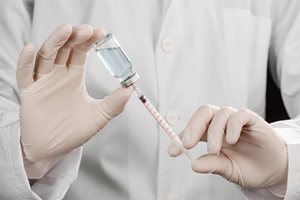(3/1/2021)
COVID-19 vaccines are here, with two authorized vaccines made by Pfizer-BioNTech and Moderna now being distributed to frontline workers and vulnerable elderly populations. The vaccine is about 95% effective in protecting us against COVID-19, and to date 48 million doses have been given in the U.S., with an estimated 5.8 million doses being given each day.
While social distancing will continue to be imperative for keeping everyone safe, these vaccines are a crucial step to ending the pandemic. With healthcare facilities teams across the country working overtime this past year to combat the spread of this infectious disease, many facilities managers are now asking themselves, “what now?”

The Role of Emergency Management
By the time the US had its first COVID-19 patient in January 2020, the Medxcel emergency management (EM) team was already preparing for the eventual vaccine and its distribution. Getting a facility ready to distribute the vaccine involves creating comprehensive checklists, including the consideration of key factors. Messaging and information must be received from a single, expert source (such as the
CDC or
WHO) to be sure that it is disseminated accurately. Facilities teams must also be in close contact with administrators and clinicians to be sure that the logistics of intercepting and storing of the vaccine are followed to a tee.
Since the Pfizer vaccine must be stored at
-70 degrees Celsius – colder than the winter in Antarctica, healthcare facilities must also maintain ultra-cold storage for the doses. This type of storage is common in research hospitals and labs, but not in many suburban hospitals or independent healthcare facilities. Therefore, many facilities teams were required to procure and install the proper refrigeration required.
What Next?
Today, COVID-19 has infected
nearly 30 million Americans and left over 500,000 dead. We want to honor the lives of those lost due to COVID-19, and this vaccine provides hope for a future free from this disease.
With the right plans in place, our dedicated team members continue to serve an important role in the distribution of the vaccine, and ultimately, ending the pandemic.
Medxcel-supported healthcare facilities nationwide were able to immediately begin administering the vaccine once authorized due to our emergency management preparations. When the vaccine was approved for release, facilities supported by Medxcel were able to distribute 38,000 vaccines in just one week in December. To date, these facilities have distributed over 300,000 first and second doses. As the vaccine continues to be administered broadly, we expect to see vaccines and immunity increase while the number of COVID-19 deaths, cases and the overall spread declines.
Executing the vaccine distribution is only possible with solid plans and processes in place with clinical staff. Those plans are built upon a strong emergency and safety program. By establishing a diverse team with experts in a variety of fields from operations, frontline workers can focus on the influx of patients with confidence that the operational aspects and logistics are taken care of.
One of the key next steps for EM teams is to continue to plan for any and all unexpected crises on the horizon, including preparing for the next potential global outbreak. As the vaccine is rolled out more widely, EM teams will be key to establishing and updating both COVID vaccine distribution plans and future infectious disease plans. Emergency management providers like Medxcel work closely with the federal government and must be able to communicate any challenges quickly and efficiently.
Want to learn more about Medxcel and our emergency management services? Contact us at
info@medxcel.com or 855-633-9235.